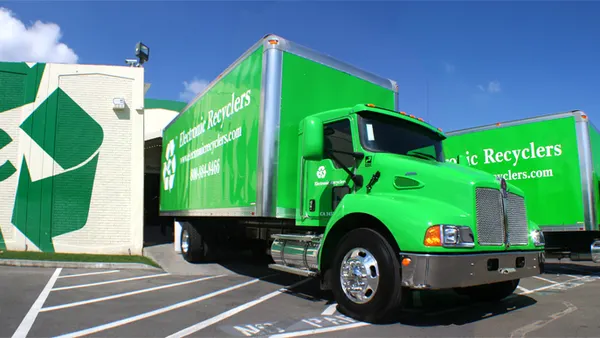Dive Brief:
- E-waste bill, HF 2841, has been unanimously passed by both bodies of the Minnesota legislature and awaits Governor Mark Dayton's signature.
- The bill would remove laptops, tablets and other electronics from the "video display devices" category because they hold higher value for resale or component harvesting. Recycling companies will no longer be allowed to charge for collection of electronics covered under the program and must hold third-party certification.
- From July 1, 2016 to June 30, 2017 computer and TV manufacturers would have to collect at least 25 million pounds of material. This goal would drop to 23 million pounds the following year and 21 million pounds the year after that.
Dive Insight:
According to the Product Stewardship Institute, Minnesota was the fourth state to pass an extended producer responsibility (EPR) system for e-waste.
The 2007 Minnesota Electronics Recycling Act requires manufacturers of video display devices to register, pay a state fee, collect certain electronics and file reports about their programs. The bill's new definition of what devices belong in this category makes sense given the change in technology since then and evolving values of different components.
Prior to the 2007 bill, local e-waste programs were also successful for the state and it has long been held up as a positive example of EPR rules for electronics. Though some experts have also pointed out that the state's program is friendlier toward manufacturers than collectors or recyclers. The new annual minimum weight requirements would seem to be a response to that and should help boost diversion rates.
This legislation comes as the state reevaluates its overall recycling rates due to changes in the waste stream. Minnesota has set a goal for metro counties to divert 75% of waste by 2030 and some have recently conducted characterization studies to better understand what's still being thrown away.











